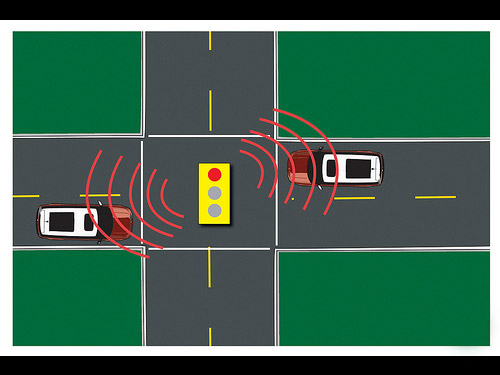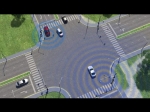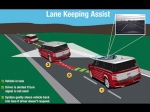31 March 2011 - Ford Motor Company researchers unveiled one of the first privately funded “smart intersections” in North America, a key step toward leveraging GPS technology and wireless infrastructure-to-vehicle communications to reduce traffic accidents and ease congestion.
The smart intersection, established near Ford’s Research & Innovation Center in Dearborn, Mich., communicates with specially equipped test vehicles to warn drivers of potentially dangerous traffic situations, such as when a vehicle is about to run through a red light. The intersection is outfitted with technology that can monitor traffic signal status, GPS data and digital maps to assess potential hazards, and then transmit the information to vehicles.
This project is one of the main focuses of Ford's engineers. They all know the work they are doing today will not become a reality in the near future, probably not even in their own lifetime. But their findings will help future generations create the connected roads and car pool we all dream of today.
WHAT A SMART INTERSECTION IS
Ford's Smart Intersection is not actually an intersection. It's a type of relationship the existing infrastructure is planned to have with the cars that pass through the streets, under stop lights and by street signs.
Smart Intersection, developed by Ford’s Research & Innovation Center, comprises two main elements, the infrastructure and the cars themselves. The infrastructure, say a stop light, communicates wirelessly with the car, informing it of an existing situation on the road ahead. The car itself uses GPS signals to tell the infrastructure its position.
HOW IT WORKS
The concept behind the project is as straight forward as they come, but it will prove to be impossible to implement in the near future, because of the reasons we’ll list below. Ford's idea calls for the traffic infrastructure in a given city to be fitted with monitor technologies that will enable it to track traffic signal status and GPS data on digital maps.
The infrastructure actually sees into the future. For instance, if two cars are approaching the intersection from opposite directions, then a traffic light can determine that the two are on a collision course after it analyzes the GPS data received from the cars (speed and direction) and projects them onto the digital map.
Before they enter any given intersection, the cars receive a detailed digital info folder of the intersection from the smart infrastructure. The folder includes a digital map of the intersection, six additional maps of surrounding stop sign intersections and crosswalks, lane-specific GPS location, as well as traffic light status and timing information.
The cars themselves, using the technology available to them (systems such as the Collision Warning), will interpret the data and, after detecting all hazards ahead, will warn the driver about the imminent danger through visual and audio alerts. From there, it's the driver's call.
As a bonus, the cars equipped with the technologies, which allow them to communicate with the intersections, will also be capable to take a snapshot, if you like, of the respective junction. This feature can be used by other motorists in cars equipped with real time traffic gadgets, who can determine whether the intersection is the best one to take on route to their destination.
Source: Ford Media




